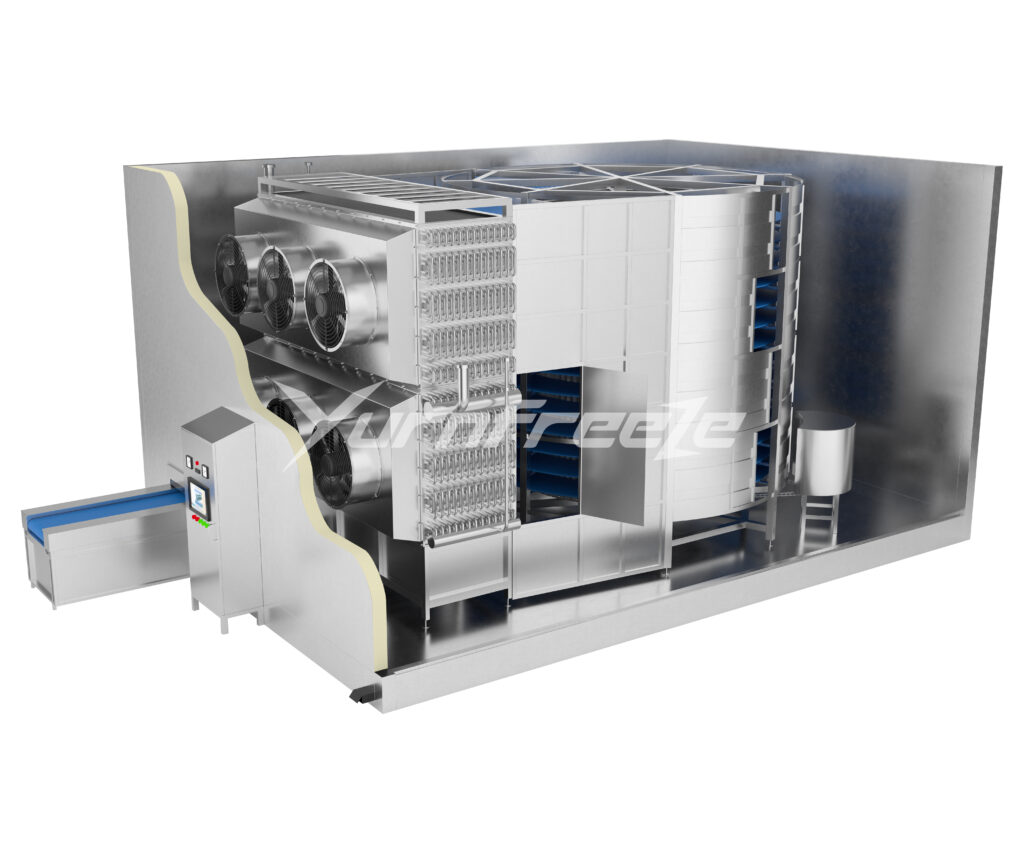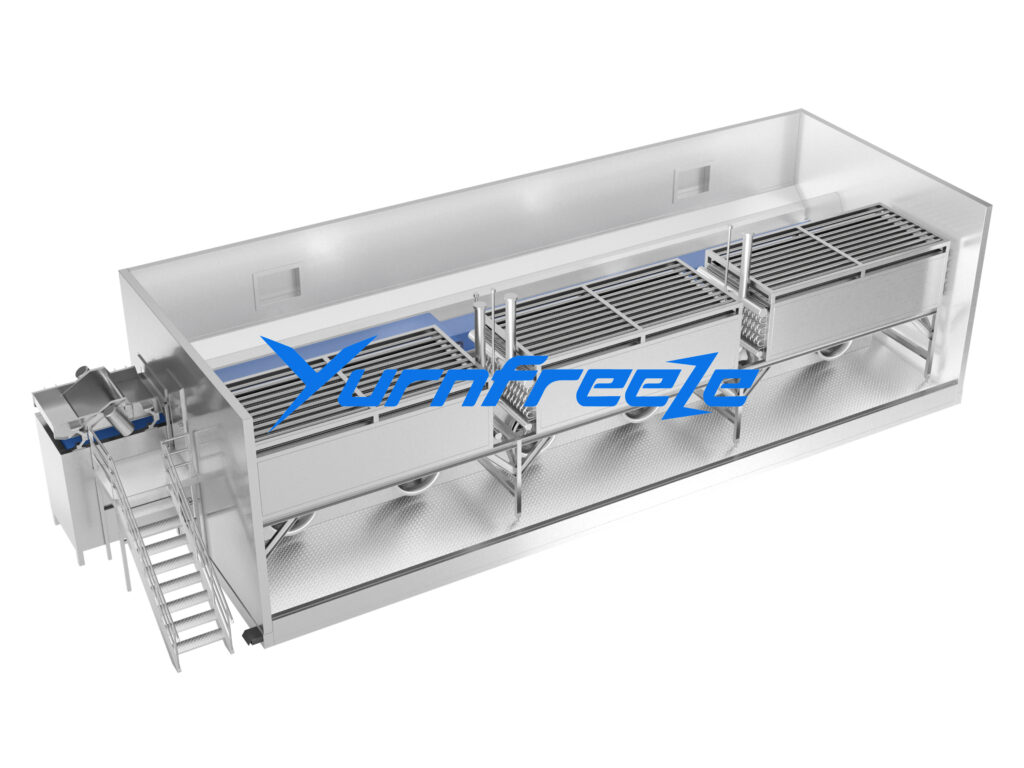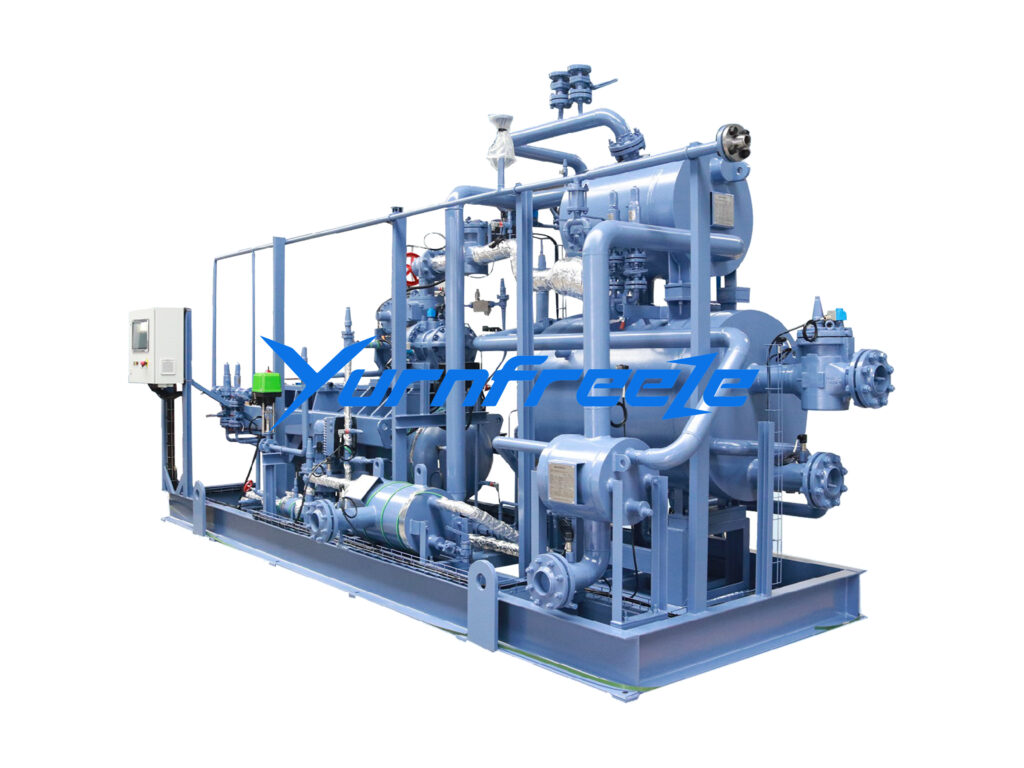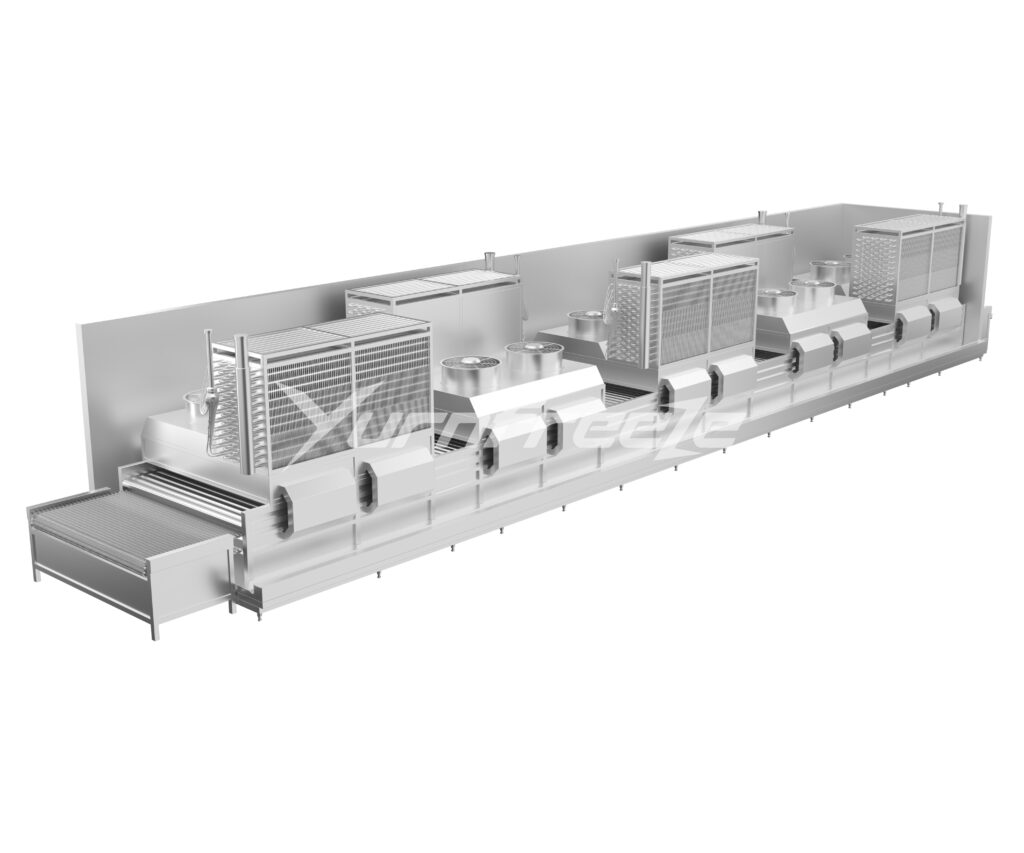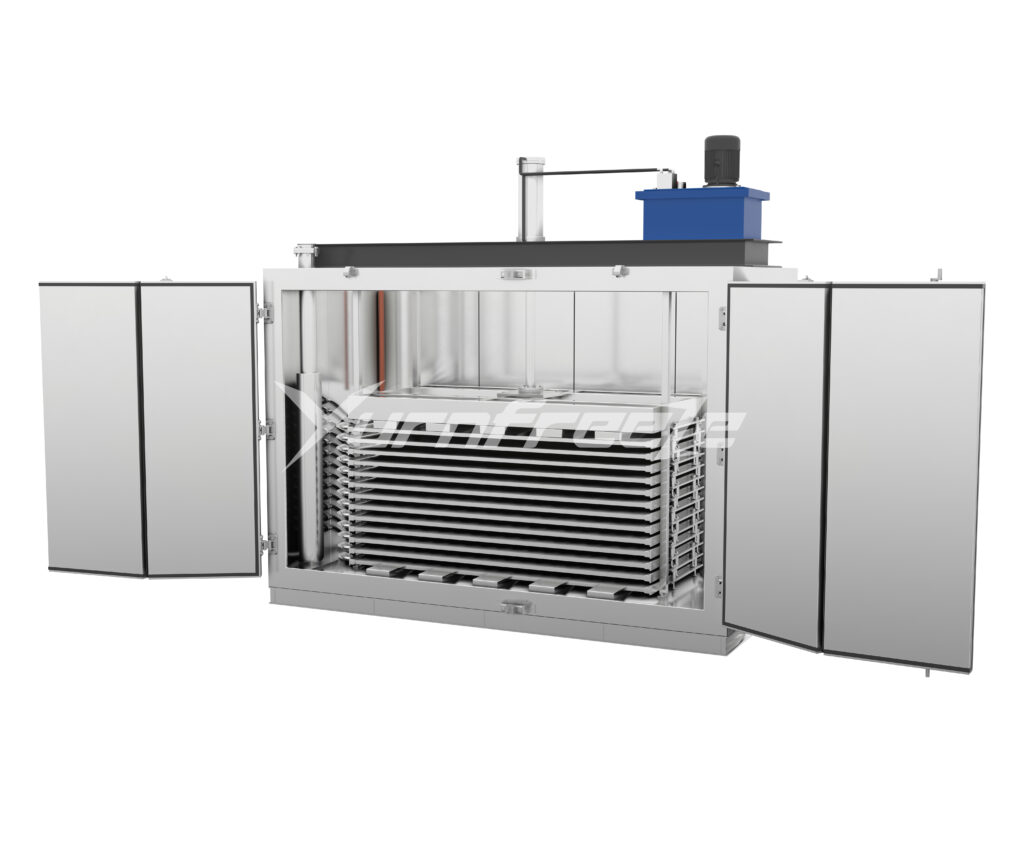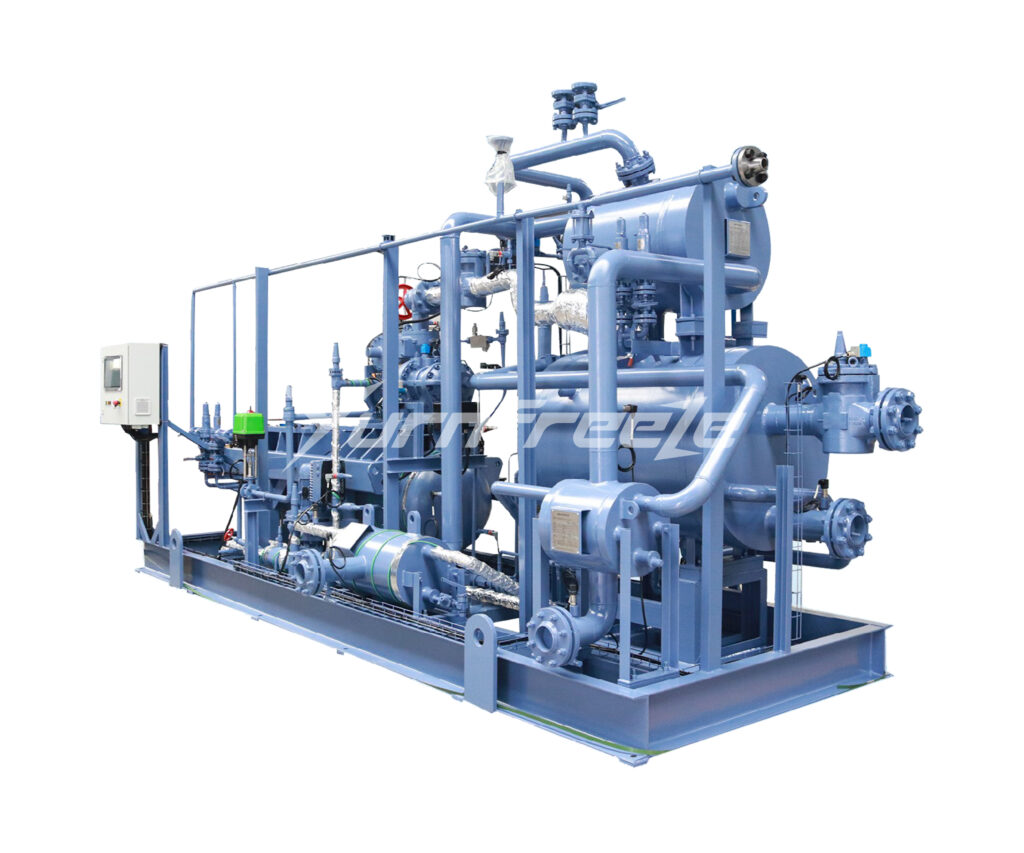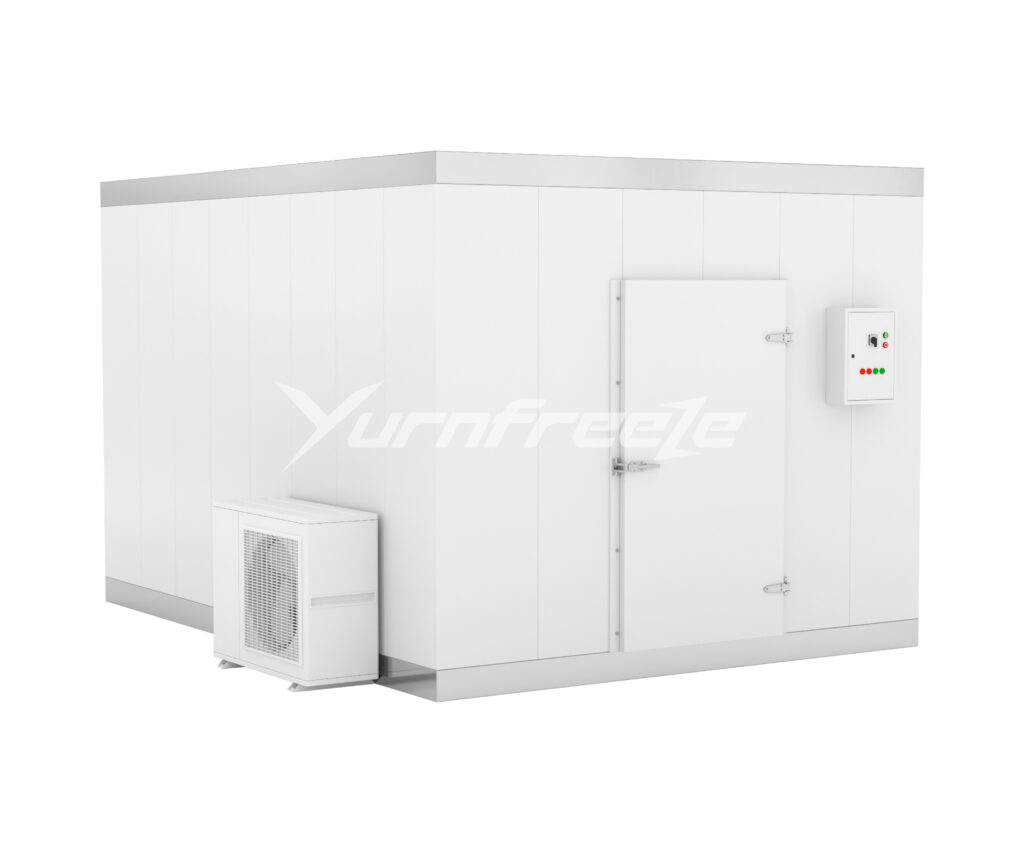Freezing inefficiencies lead to higher costs and product quality loss. A better solution is needed. Spiral freezer solve these issues with high efficiency, space optimization, and cost savings.
Spiral freezers outperform other industrial freezing methods by maximizing space, reducing energy consumption, and ensuring high-capacity production. Their compact design and advanced airflow technology make them ideal for food manufacturers looking to improve efficiency and product quality.
[Table of contents]
- What Are the Key Advantages of Spiral Freezer?
- How Do Spiral Freezer Save Energy and Reduce Operational Costs?
- Can Spiral Freezers Handle High-Capacity Production Lines Effectively?
What Are the Key Advantages of Spiral Freezer?
Efficient Use of Space:
Spiral freezers maximize vertical space, making them ideal for facilities with limited floor area. Unlike tunnel freezers, which require long conveyor belts, spiral freezers stack products in a compact, multi-tier system.

| Freezer Type | Space Efficiency | Processing Capacity | Best for |
| Spiral Freezer | High | High | Space-saving, high-output production |
| Tunnel Freezer | Low | Medium-High | Large facilities with extended production lines |
| Plate Freezer | Medium | Low-Medium | Block freezing applications |
Better Product Quality:
Spiral freezers provide even airflow distribution, preventing dehydration and ensuring uniform freezing. This reduces ice crystal formation, preserving food texture and taste.
Flexibility for Various Products:
These freezers handle a wide range of products, from seafood and poultry to bakery items. Adjustable belt speeds and airflow settings allow customization for different freezing requirements.
How Do Spiral Freezer Save Energy and Reduce Operational Costs?¹
Spiral freezers utilize advanced airflow systems and efficient insulation to lower energy consumption and reduce operating costs.
Optimized Airflow² Technology:
With controlled air circulation, spiral freezers minimize heat loss and improve heat transfer efficiency. This means faster freezing with less energy usage.
Lower Refrigerant Usage:
Compared to other freezers, spiral systems require less refrigerant to achieve the same freezing results. This contributes to lower costs and reduced environmental impact.
Reduced Labor Costs:
Since spiral freezers operate with automated conveyors, they require minimal manual handling, reducing labor costs and improving operational efficiency.
Can Spiral Freezers Handle High-Capacity Production Lines Effectively?
Yes, spiral freezers are designed for high-capacity processing, making them a reliable choice for large-scale food manufacturers.
Continuous Freezing for Large Volumes:
Spiral freezers support continuous freezing operations, allowing manufacturers to process high volumes without frequent stops or batch limitations.
Seamless Integration with Production Lines:
They integrate easily with upstream and downstream processes, such as coating, frying, and packaging, ensuring smooth production flow.
Customizable to Meet Production Needs:
Manufacturers can customize belt width, tier height, and conveyor speed to accommodate specific production demands.
Conclusion
Spiral freezers provide efficient freezing, space-saving designs, energy efficiency, and high-capacity handling, making them an ideal choice for industrial food processing.
Footnotes
- Explanation: Explore how spiral freezers leverage continuous freezing technology and optimized mechanics to reduce energy consumption. The link breaks down their operational principles, from refrigerant efficiency to seamless automation, and how these features cut long-term costs.↩
- Explanation: Proper airflow is critical for achieving uniform freezing, preventing dehydration, and reducing energy waste. In spiral freezers, controlled air circulation ensures even product cooling and consistent quality. Discover moreabout the impact of airflow on freezing performance and how it optimizes industrial food preservation.↩

